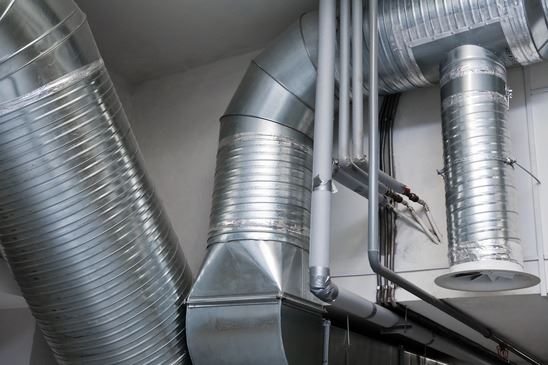
Your air ducts are an important part of your heating and cooling system. Ductwork comes in a variety of sizes and shapes, and can be made from many different things. They aren’t a one-size-fits-all kind of product.
Before you embark on maintenance work or ensure they are in top working condition, it’s important to understand what your air ducts are made from and how best to proceed.
There are several different types of materials used for your HVAC system.
Flexible Ducts
Flexible ducts are usually tube-shaped, made of a wire coil and covered with a bendable, durable plastic that is surrounded by insulation. What makes this ductwork a good option is when dealing with tricky spaces where rigid ductwork isn’t possible to install. It’s also often used to attach non-flexible ductwork to an air supply outlet. Flexible ductwork needs to be properly secured and supported, ensuring kinks, bends, turns and sagging are kept at a minimum. When any of these problems occur, it has the potential to reduce air flow and hamper both the efficiency and effectiveness of the HVAC equipment.
Rigid Ductwork
Rigid ducts come in a variety of materials and sizes, and are either cylinder or rectangular. They are also often insulated. They are also one of the hardiest and reliable products to work with. You’ll find:
Sheet metal ducts – sheet metal ducts are often the most commonplace, usually made from either galvanized steel or aluminum. Aluminum, in particular, is relatively light and easy to install. They are also the least likely to harbor dangerous biological growths because of their non-porous surfaces.
Fiberglass ducts – these are sheet metal ducts that have internal or external fiberglass lining. You’ll often find these in office or commercial settings, as it dampens the sound of the HVAC unit.
Fiberboard ducts – fiberboard is made from fiberglass strands that are compressed and bonded with a resin, covered with a sheet of foil laminate to protect it from moisture. Fiberboard ducts are good for cooling and heating systems because they are well insulated by themselves.
What type of ductwork is in place in your home? Is it the most reliable product for your HVAC system? Are there leaks and other maintenance problems making your HVAC less efficient than it could be? Maybe now is the time to fix those problems once and for all.

